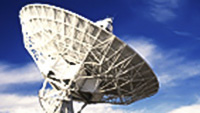Search and order online
Smart-1: Story 4- Driving an ion engine in space
- Video Online + Tape
- Title Smart-1: Story 4- Driving an ion engine in space
- Released: 30/03/2003
- Length 00:05:19
- Language English
- Footage Type Documentary
- Copyright ESA
- Description
This is the last of four programmes on ESA's SMART-1 spacecraft which will fly to the moon following a launch on Ariane 5 on 28 August. The programme investigates the ion propulsion technology that the mission will test in view of its use for Europe's future large deep space mission. Thanks to ion propulsion, light, i.e. energy from the sun can be used to accelerate a spacecraft
This Exchange comprises of a 5 minute A-roll with split audio (English commentary/international sound) and is complimented by a 8-minute B-Roll with clean international sound.Story 4 - Driving an ion engine in space
OFF 1
TC 10.00.42
As scientists demand more from space missions travelling to other worlds and beyond, traditional rocket technologies are beginning to show limitations.
TC 10.00.51
The solar-powered ion engine used on Smart-1 cannot compete in terms of ñbrute forceî with the whoosh of a chemical rocket but the latter burns for only a few seconds or minutes. An ion engine can go on pushing gently for months or even years - for as long as the Sun shines and the small supply of propellant lasts.
TC 10.01.11
ITV with Giuseppe Racca, project manager for SMART-1
"" People may wonder why we want to go to the Moon with electric propulsion and take one year while with chemical propulsion it's a matter of days.This is true but the real objective of electric propulsion is not a mission to the Moon. In fact if should we make a mission to Mercury with ion propulsion, we would save 2, 3 or 4 years of travelling time compared with chemical propulsion. In addition highl











